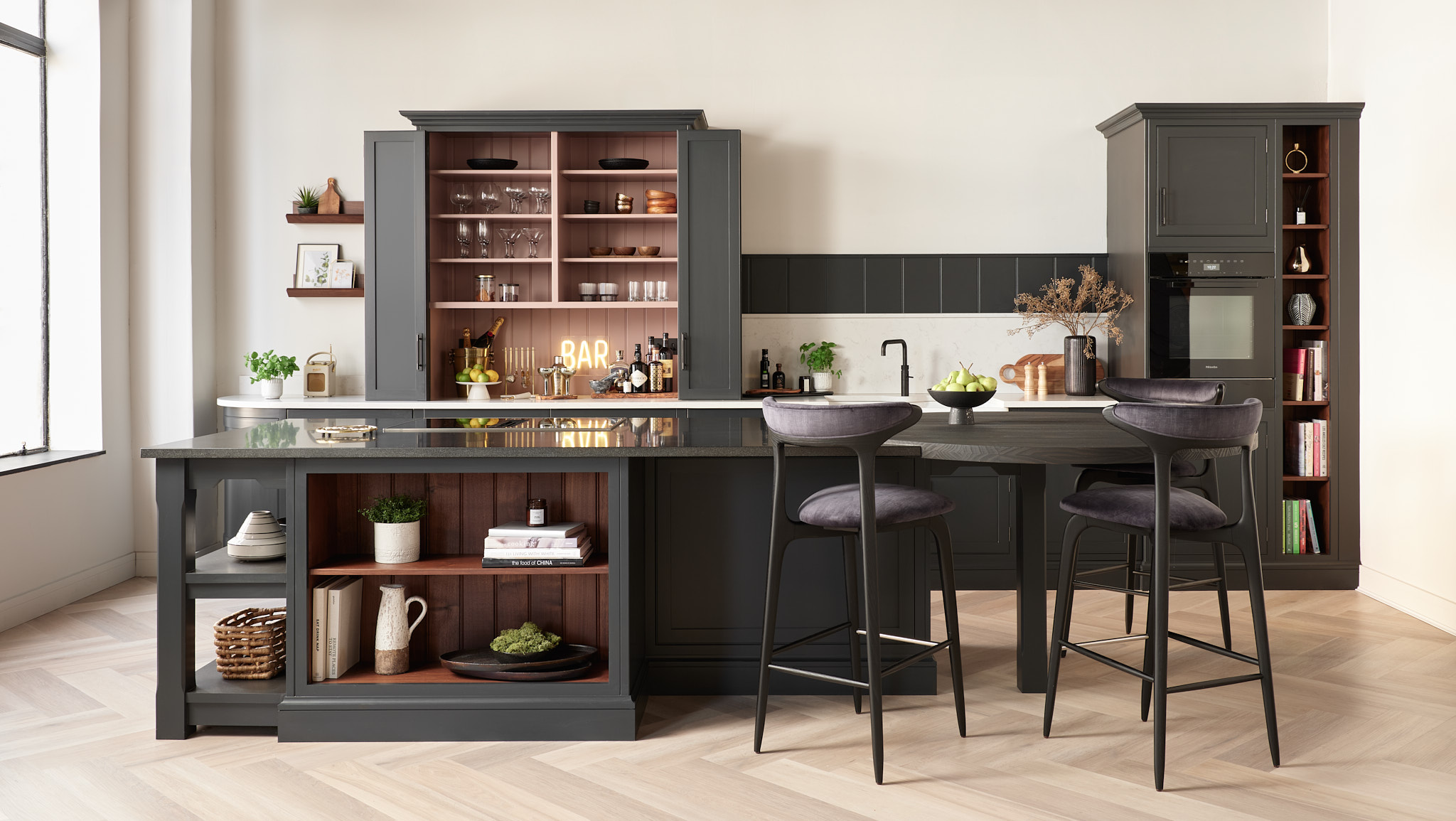YOUR KITCHEN FINISHING TOUCHES
Choosing your kitchen cabinets is likely to be the start of your kitchen interior design journey but it shouldn’t be the end. Whatever your kitchens key finishing touches are, whether it’s hard-wearing flooring, splash back tiles or mood lighting. This will help to bring the look of your kitchen together ensuring your finished design is the one you dreamed of, whether it’s a hand-painted Shaker kitchen or a flat-fronted bespoke contemporary design.

FLOORING
Flooring covers one of the largest surface areas in your kitchen so the choice of design, layout and finish should be as much of a consideration as the cabinets. Flooring can set the tone for the entire décor scheme providing a solid base for your cabinetry, whether your cabinetry is hand-painted, modern or something more traditional. In a contemporary kitchen design, choose crisp lines and sleek urban materials such as large format porcelain tiles. Classic country style kitchens benefit from a more rustic look, such as natural or engineered wood.
Porcelain and ceramic tiles will be hardwearing and easy to fit, while natural stone can look amazing with its natural variations but can be tricky to keep looking good, as it will need constant care. While original planks can look amazing, particularly in hand-painted kitchens, sometimes solid wood isn’t the best choice because of the way it can bend and bow as it reacts to changes in temperature and moisture. Engineered wood is often a better choice as it is much less susceptible to those elements and is easy to keep looking good, too, as it will be specially treated to keep the finish looking good over time.
In open-plan kitchens, think about using different materials on the floor to break up and zone the space. Flooring that is tough and will withstand heavy traffic is best for the main cooking area, while consider softer materials in the seating area – wood and even soft rugs. If you want the same flooring throughout then adding rugs to seating areas is a good compromise.
SPLASHBACKS
The space between worktop and wall cabinets is a perfect one for adding a bit of personal style into your scheme without going too crazy and a dynamic splashback will provide a vibrant talking point in any kitchen design.
You can use your splashback to add blocks of dense colour, add depth with some of the latest 3-D designs and even make a small room appear wider with reflective glass or even mirrored panels.
Of course, the main function of splashbacks is to protect the wall from water and cooking splashes that will mark the walls, so it’s best to opt for materials that are strong, durable and non-porous and, most importantly, easy to clean.
Areas around the sink and hob are most likely to be the ones needing protection but you can save money using low-level upstands elsewhere. Often made from the same material as the worktop, they are around 100mm high and will prevent food slipping down the back of cabinets and are particularly helpful to hide wonky walls in period homes.

LIGHTING
There is nothing worse than a dimly lit work area or a harshly lit seating space so choosing the right lighting is essential to having a kitchen that works well. Practically speaking you should make sure there are plenty of task spots above key areas to ensure the light isn’t blocked while you stand at the sink, hob or worktop. Consider, too, the balance between task and mood lighting, using dimmer switches on your main lights can also help create a glow in the evening – perfect for entertaining. However, for most of us, once the practicalities are dealt with it’s down to the more exciting part of choosing feature lighting.
The choice of pendants in particular – for placing above an island or dining table – is made not just to provide illumination but also to draw the gaze to an attractive feature. Catching our eye this autumn are large wicker shades, fluted or ribbed glass and pendants in burnished brass and gold. Use bigger, statement shades in singles above dining tables and seating areas and ensure they can be dimmed if you want the atmosphere to be more intimate.
Above islands, place in threes or fives depending on the size not just of the island but of the pendant as well. Too large and it will feel crowded, too small and it won’t provide the right amount of light, particularly if you’re also using the island for prep or relaxed eating.







